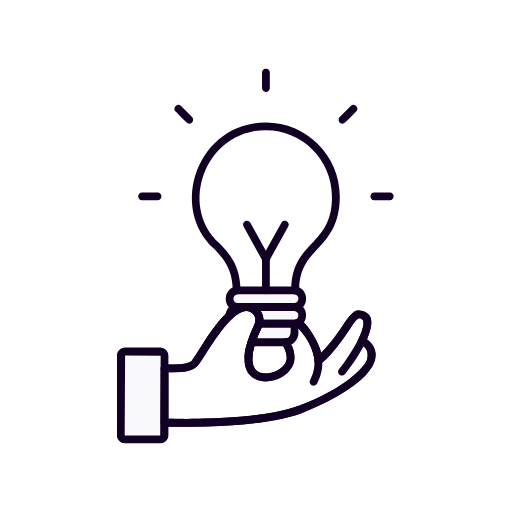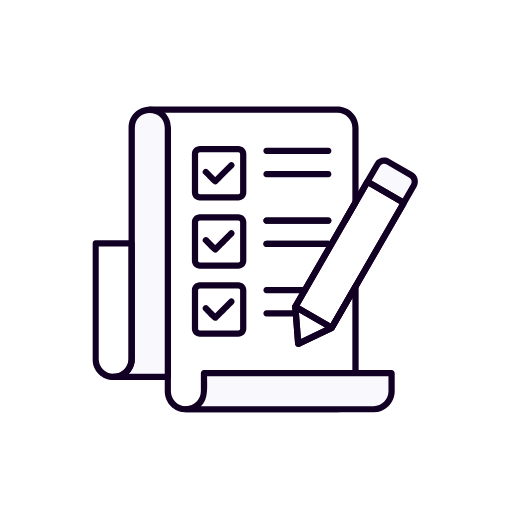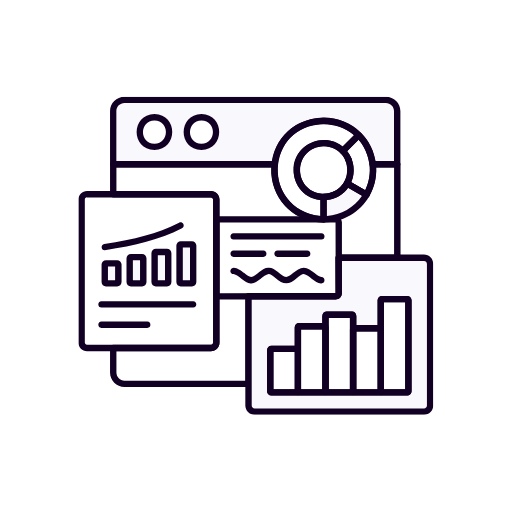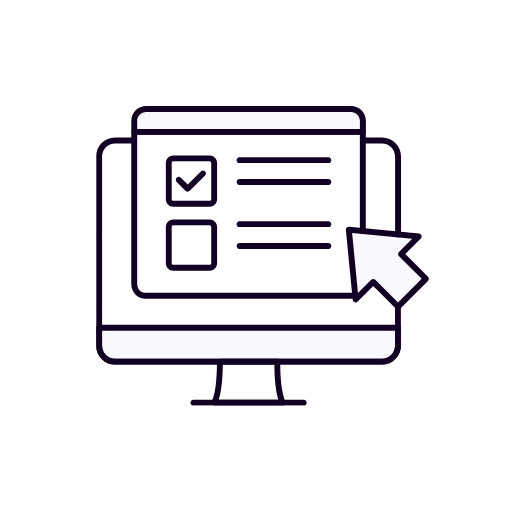Behavioral Triggers
AI Services > AI Workflow Automation > Marketing Automation Workflows > Behavioral Triggers
Behavioral Triggers
Trigger actions based on user behavior—like site visits, clicks, and cart abandonments—with AI-powered workflows that boost engagement and drive results
Real-Time Reaction
Your campaigns respond instantly to clicks, exits, or inactivity
Behavior Intelligence
Triggers based on patterns—not just visits or views
Revenue-Boost Focus
Each automation is built to bring users back and drive sales
Why Choose Us
Trigger Engagement, Not Guesswork
Our AI monitors real-time behaviors and triggers the right response—maximizing relevance, boosting conversions, and automating intelligently
“Cart recoveries jumped 60% after Octopus set up our behavior triggers!”
Malik Rojas,
― Ecom Manager

AI-Driven Behavioral Targeting
We track user signals—clicks, visits, hovers—and trigger messages, offers, or actions at the right moment to reduce drop-offs and boost conversions
- Signal-based targeting
- Click-time reactions

Cart and Journey Recovery Flows
From abandoned carts to halfway form exits, our AI triggers smart sequences across Email, SMS, or WhatsApp to bring users back and close the loop
- Cart exit follow-ups
- Funnel rescue tools
Our Services
Behavior That Sparks Action
Explore our behavioral trigger tools—from visit-based automation to conversion rescue workflows—all powered by AI for instant, precise engagement

Site Visit Triggers
Fire personalized messages or offers based on page views and visit frequency

Cart Abandon Triggers
React to cart drop-offs with automated reminders, incentives, and nudges

Click-Based Triggering
Trigger specific follow-ups when a user clicks on a CTA, link, or product

Exit Intent Detection
Deploy smart popups or messages when users show signs of leaving

Form Abandon Follow-Ups
Send reminders and support if users abandon forms mid-way

Product View Alerts
Nudge users who revisit or linger on product pages with offers or info
Behavioral Triggers
Harnessing User Actions for Smarter Marketing
Understanding user behavior is no longer optional—it’s a necessity. At Octopus, we leverage behavioral triggers to build targeted, data-driven engagement strategies that drive conversions and reduce drop-off. Whether a user visits a product page, abandons a cart, or clicks through a campaign link, each action is a signal. We read these signals to craft precise, timely marketing responses that move users closer to conversion.
Behavioral triggers function as a sophisticated layer within modern marketing automation. These aren’t just arbitrary actions; they are reflections of user intent and interest. When someone visits your pricing page repeatedly, it’s a cue. When they leave items in their shopping cart, it’s a missed opportunity ripe for re-engagement. When they click through a newsletter but don’t convert, it’s a hint that something caught their interest—but perhaps not enough. Recognizing and responding to these micro-behaviors with contextual relevance makes all the difference. By mapping these moments to strategic responses, we build dynamic engagement loops that increase lifetime value and improve customer experience metrics.
Site Visit Behavior: The First Engagement
Every site visit is a doorway to understanding your customer better. From the landing page to the last interaction, we analyze patterns—scroll depth, dwell time, page flow, and exit points. These metrics inform not just content strategy but help refine UX design, retargeting logic, and funnel segmentation. Our approach combines machine learning with user flow analysis to detect when a site visitor is primed for an offer, further information, or even a sales outreach.
Our advanced segmentation models break down users by behavior clusters. A visitor who browses the blog frequently differs fundamentally from someone who repeatedly explores the pricing section. One may be in the awareness phase, while the other is on the cusp of decision-making. By triggering different marketing flows based on these behaviors, we personalize user journeys in real-time, ensuring relevance at every step.
Incorporating semantic keyword clusters related to user engagement—like “session depth analysis,” “bounce rate reduction,” “visitor segmentation,” and “clickstream behavior”—enables us to refine our targeting and provide highly individualized experiences. Our platform tracks heatmaps, event triggers, and engagement metrics to continuously evolve each visitor’s digital journey. We also integrate geolocation data, device type, and browser history to build more robust visitor profiles and engagement matrices.
Cart Abandonment: Turning Hesitation into Conversion
Cart abandonment is not a failure—it’s a second chance. At Octopus, we build comprehensive cart recovery sequences that are both respectful and effective. These triggers activate based on the time since abandonment, the value of the cart, and the user’s previous purchase history. Our strategies include dynamic retargeting ads, personalized email series, and sometimes even chat prompts if the user returns.
Each element of the abandoned cart sequence is crafted with psychological precision. Emails might highlight scarcity (“Only 3 left in stock”), offer incentives (“Enjoy 10% off if you complete your order today”), or simply provide reassurance (“Still thinking it over? Here’s what our other customers said”). These messages aren’t mass-blasted—they are segmented by user persona, past behavior, and demographic profile.
Moreover, we don’t stop at email. Behavioral web popups, SMS nudges, and in-app notifications all play a role in a coordinated recovery strategy. Every touchpoint is an opportunity to rebuild momentum and reduce friction in the purchase path.
Our behavioral framework incorporates semantic variations like “ecommerce conversion triggers,” “exit-intent targeting,” “purchase recovery workflows,” “shopping behavior analytics,” and “customer intent modeling.” These phrases are not merely buzzwords—they’re strategic elements of a precision marketing toolkit. We also deploy time-based trigger enhancements and A/B tested engagement sequences to ensure maximum reactivation success.
Click Behavior: Interpreting Interest and Optimizing Funnels
Every click is a breadcrumb—a signal of curiosity, intent, or preference. We map these clicks to understand user priorities, interests, and obstacles. Whether it’s a click on a feature tab, a pricing toggle, or a testimonial link, we record and analyze each micro-interaction. These insights allow us to prioritize high-performing content, refine calls-to-action, and better align messaging with user intent.
Our click-based triggers are often the foundation of lead nurturing workflows. For instance, a user who clicks on “enterprise solutions” might be routed into a high-touch sales sequence, while one who explores “case studies” receives educational content. This logic ensures that we don’t just react to clicks—we predict next steps and respond proactively.
Click behavior also informs A/B testing and conversion rate optimization efforts. If we observe that a certain CTA button gets significantly more clicks in one color scheme or position, we adapt our templates accordingly. Nothing is static; everything is iterative.
Relevant semantic additions—”user click heatmaps,” “interaction tracking systems,” “click-through intent analysis,” and “micro-conversion behavior”—support our approach and reinforce data-driven decisions across the marketing funnel. Additionally, we assess engagement drop-off points and integrate conversion heuristics to bolster mid-funnel strategies.
Integration with CRM and Marketing Automation
Behavioral triggers gain their true power when integrated seamlessly with CRM systems and marketing automation platforms. At Octopus, we connect user actions to enriched customer profiles, ensuring that every piece of outreach is both relevant and timely. Our system updates lead scores in real-time, adjusts lifecycle stages, and triggers workflows across email, SMS, and digital ad platforms.
For e-commerce, this means automating upsell and cross-sell flows based on purchase patterns and browsing history. For B2B, it means adjusting lead qualification dynamically and triggering SDR outreach when a key account shows intent signals. Our architecture supports platforms like HubSpot, Salesforce, Klaviyo, and more.
By ensuring bi-directional data sync, we create a marketing brain that remembers, learns, and evolves with your users. This reduces waste, increases ROI, and strengthens brand trust. Our system also utilizes AI-driven orchestration with terms like “data-driven workflow automation,” “customer data platforms,” “real-time lead scoring,” and “triggered CRM updates” to elevate performance. This allows for predictive behavioral modeling that anticipates user actions and proactively shapes marketing flow.
Behavioral Personalization: Content, Offers, and UX
Trigger-based strategies go beyond messaging—they extend into how your site looks and feels. At Octopus, we deploy behavioral personalization techniques that change on-site experiences based on user segments. This includes dynamically switching hero banners, showing personalized product recommendations, or even altering the language tone to match user profile (corporate vs startup).
Offers too are behaviorally adapted. A first-time visitor might see a welcome discount, while a returning user who abandoned cart might be offered expedited shipping. These conditional experiences are powered by data, not guesswork.
On the content side, we tailor what users see. For instance, someone who consumed two whitepapers on B2B lead gen might get a prompt to download a comparison guide next. This progressive disclosure builds trust and accelerates decision-making.
Enriched semantic support includes terms such as “personalized UX design,” “behavioral segmentation for conversion,” “trigger-based content optimization,” and “real-time onsite personalization.” These not only improve organic visibility but support strategic clarity across the user experience. We also apply behavioral heuristics and adaptive content architecture to ensure seamless experience across all touchpoints.
Predictive Triggering Models: Anticipating Behavior
Predictive behavioral modeling is at the core of our future-focused strategies. Using historical behavior data, we train machine learning models to forecast user actions. These models allow us to implement proactive marketing interventions—nudging users before they abandon, suggesting products before they’re searched, or offering support before confusion arises.
Our models incorporate variables like session sequence, navigation paths, inactivity windows, and historical purchase timelines. This allows us to assign intent scores and trigger personalized actions that boost engagement, loyalty, and sales. These models are continuously retrained with new data, improving accuracy and responsiveness over time.
By leveraging terms like “predictive analytics for ecommerce,” “intent-based engagement,” and “real-time behavior forecasting,” we turn raw interaction data into strategic foresight. Our clients benefit from reduced churn, higher repeat purchase rates, and shorter sales cycles thanks to these anticipatory tactics. Predictive triggering is not just an enhancement—it’s the next evolutionary step in behavioral marketing.
Multichannel Behavioral Sync: Consistency Across Touchpoints
Users engage with brands across platforms—desktop, mobile, email, ads, social media. Octopus ensures that behavioral triggers operate in a synchronized manner across all channels. When a user abandons a cart on mobile, a reminder email, a social ad, and an in-app prompt on desktop may all coordinate to deliver a seamless nudge.
This unified approach prevents disjointed experiences and amplifies message effectiveness. We ensure that messaging, timing, and UX remain consistent, regardless of where or how the user engages. Multichannel sync allows us to create coherent narratives across the user journey—an essential component of brand trust and recognition.
We also incorporate semantic strategies like “cross-device behavioral retargeting,” “multi-platform engagement workflows,” and “coordinated omni-channel personalization” to describe our approach. These integrations increase lifetime customer value and streamline messaging cadence across touchpoints. With Octopus, your marketing becomes not only omnipresent—it becomes omnirelevant.
Continuous Learning: Feedback Loops and Data Evolution
Effective behavioral marketing is never static. At Octopus, we implement continuous learning systems that ingest user interaction data in real time, analyze outcomes, and recalibrate triggers accordingly. Our systems learn from each campaign’s performance, each user’s response, and each platform’s engagement pattern.
These feedback loops enable fine-tuning of message timing, content type, and delivery medium. They also identify emerging patterns—such as shifting peak engagement times or new device usage trends—and adjust strategy dynamically. Through intelligent feedback, we not only enhance immediate campaign performance but inform long-term planning.
Our continuous learning process is underpinned by semantic frameworks such as “behavioral loop optimization,” “adaptive engagement modeling,” and “performance-informed targeting strategies.” These methodologies ensure that every marketing action improves the next, forming a compounding effect on efficiency, precision, and ROI.
Privacy-First Behavioral Strategy: Trust and Compliance
In an age of increasing privacy awareness, Octopus prioritizes a privacy-first approach in all behavioral strategies. We ensure that all data usage complies with GDPR, CCPA, and other relevant regulations. Consent management, data minimization, and transparent user controls are built into every system we deploy.
We employ contextual targeting, anonymized behavioral pattern analysis, and privacy-safe personalization tools that deliver precision without intrusion. Our commitment to ethical data handling enhances user trust and strengthens your brand’s integrity in a digitally skeptical world.
Behavioral Triggers in Mobile Commerce: Real-Time Engagement
Mobile behavior triggers offer a distinct opportunity for timely engagement. Octopus utilizes app usage patterns, device-based segmentation, and real-time mobile analytics to engage users through push notifications, SMS, and in-app experiences.
We leverage micro-moments—like scrolling pauses, app exits, and on-screen interactions—to trigger personalized offers, support prompts, or content nudges. Our mobile-specific behavioral strategies are tailored to the compact, immediate nature of mobile engagement, ensuring relevance without interruption.
Why Octopus: Strategic, Modern, Insightful
We don’t guess—we decode behavior with precision. At Octopus, behavioral triggers are not gimmicks. They are the foundation of a modern, scalable, and insight-driven marketing ecosystem. We combine data analytics, UX strategy, and AI-driven personalization to ensure that every user interaction counts.
From Dubai to the broader GCC, we’ve implemented behaviorally intelligent strategies that perform across sectors. Whether it’s recovering lost revenue through smart retargeting, optimizing site flows based on dwell time, or enriching CRM data through click patterns, our methodologies are tried, tested, and tuned for performance.
We speak the language of outcomes. Our approach reflects Octopus’ DNA: confident, methodical, and data-grounded. We don’t just follow trends—we set standards. Partnering with Octopus means embracing a culture of strategic clarity, technical rigor, and creative finesse. Your behavioral marketing isn’t just another campaign—it’s your growth engine, powered by insight.
Let's get started
Be part of the future
Outpace your rivals with Octopus Marketing Agency – be the brand that leads, not follows

Ask Us Anything We’re Ready To Help
Looking for answers? Browse our quick FAQs. Need more details? Explore our comprehensive guide
01. How does digital marketing help to grow your business?
At Octopus, we help businesses grow by attracting the right audience, converting leads efficiently, and building long-term customer value through targeted, data-driven digital strategies.
02. How is digital marketing different from traditional marketing?
Unlike traditional marketing, digital marketing is trackable, highly targeted, and optimized in real time — delivering measurable results, faster ROI, and deeper engagement.
03. How does digital marketing help small businesses?
We empower small businesses to compete with larger brands through affordable, scalable solutions like SEO, social media, and email automation that drive growth on any budget.
